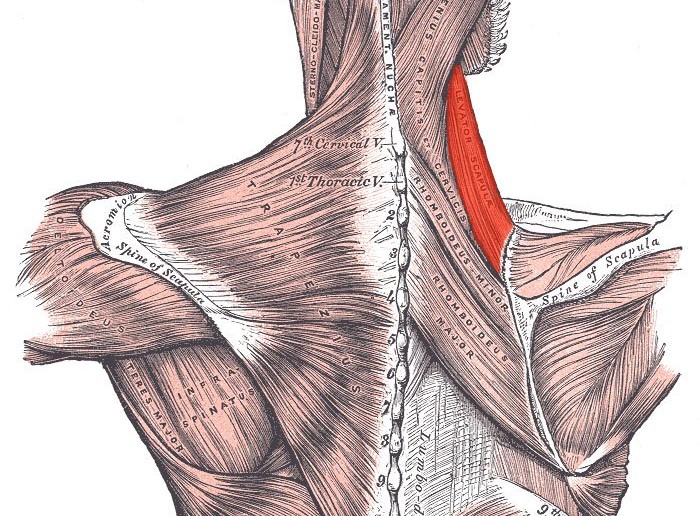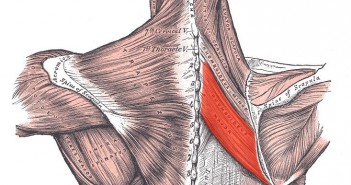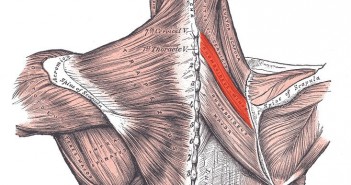The levator scapulae is a skeletal muscle situated at the back and side of the neck.
As the name suggests, its main function is to lift the scapula (shoulder blade).
Actions
The levator scapulae holds the scapula against the trunk.
When the shoulder is fixed, the levator scapulae laterally flexes and rotates the cervical spine (neck).
When the spine is fixed, the levator scapulae:
- Works with the trapezius to elevate (lift) the scapula.
- Works with the rhomboids and pectoralis minor to rotate the scapula downwards (inferior rotation – moving the inferior angle of the scapula medially and downwards).
- Works with the serratus anterior and pectoralis minor to protract (abduct) the scapula – a forward movement away the midline of the body, moving the scapula away from the spine during the prostration of the shoulder girdle.
Figure 1. Position of the levator scapulae muscles.
The Role of the Levator Scapulae in the Golf Swing
The levator scapulae help to stabilise the shoulder blade, enabling the efficient transfer of energy up the kinetic chain, and the safe deceleration of the upper body in the follow-through.
Limited mobility or weakness in the levator scapulae muscles can lead to upper crossed syndrome – an imbalance that causes a C-shaped posture of the back and hunched shoulders to occur at address. This position can limit the golfer’s ability to rotate properly during a full swing.
Limited mobility in the thoracic spine and weaknesses in the muscles of the mid-back can cause the levator scapulae to over-compensate, leading to golf-related back and neck pain.
If you have any questions or comments about this or other articles on Golf Loopy, please send us an email.
You May Also Like…
Overview of a Great Golf Swing, which summarises the correct movements in a great golf swing.
Why is Having the Shoulders “Connected” So Important? Which explains how the shoulders enable the power of the big muscles in your legs and core to be transferred to the golf club.
Golf Anatomy and Kinesiology, a collection of articles describing the roles of the muscles involved in the golf swing.
Trapezius muscle, which describes the large muscles between your neck and your shoulders.





